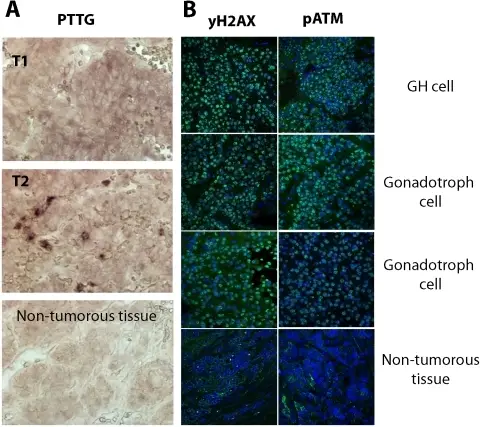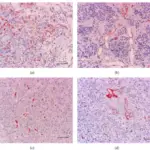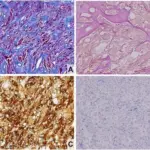Gonadotroph adenomas are type of adenomas that secrete the gonadotropins Follicle Stimulating hormone (FSH) and latinizing hormone. (LH).
Associated syndromes include:
- Hypogonadism
What is the Pathology of Gonadotroph Adenomas?
The pathology of gonadotroph adenomas is:
Etiology: The cause of gonadotroph adenomas is the amalgamation of molecular genetic changes and hormonal stimulation acting as a promoter.
-Genes involved: GNAS1 gene.
-Pathogenesis: The sequence of events that lead to gonadotroph adenomas is as follows. The mutation and activation of Gsα result in the generation of cyclic adenosine monophosphate (cAMP), a potent mitogenic stimulus for variety of endocrine cell types, hence endorsing hormone synthesis and secretion and cellular proliferation.
-Morphology: The morphology associated with gonadotroph adenomas shows that it may range in size from small termed microadenoma to large adenomas, spherical, soft, and encapsulated.
-Histology: The histology associated with gonadotroph adenomas shows chromophobic cells.
How does Gonadotroph Adenomas Present?
Patients with gonadotroph adenomas typically common in more women than men present at age range of 30 to 45 years. The symptoms, features, and clinical findings associated with gonadotroph adenomas include diplopia, headaches, or pituitary apoplexy, reduced energy and libido in men.
How is Gonadotroph Adenomas Diagnosed?
Gonadotroph adenomas is diagnosed through laboratory studies imaging and biopsy.
How is Gonadotroph Adenomas Treated?
Gonadotroph adenomas is treated resection of the tumor.
What is the Prognosis of Gonadotroph Adenomas?
The prognosis of gonadotroph adenomas is fair as resection correct visual impairment diminishes endocrine dysfunction, resolve headaches.



